Take a quick look at this photo and then close your eyes and think about it a bit:
I’m guessing that your overall impression is that it’s a mess, just a lot of visual crap. If you are of a psychoanalytic cast of mind, you might even think it rather anal expulsive. And then you might notice that hey! there’s a toilet there, or perhaps you have to take another look and focus a bit to see it amid all the, you know, crap.
Holy crap! you’re thinking, I was right. Anal as hell.
And then you might wonder how and why that particular bathroom got to be such a mess. After all, that’s not how bathrooms are in our culture. We like them clean and neat, like this one in a men’s rooming house:
The Underground
Well, that first bathroom, I assure you, is not in a men’s rooming house, though a few guys do make their home in that space from time to time. It’s in an old industrial building – used to belong to Clorox – in a second or third tier neighborhood in Jersey City. It’s part of a 5000 sq. ft. suite that’s used as an event space for an underground cultural scene. That’s the building there to the left, though this particular suite is at the other end:
We’re looking into the alley behind the building. Though you can’t quite see it, the walls of the alley are lined with graffiti from one end to the other. Here’s the entrance hall to the suite:
The bathroom is through the door and to the left. If you go through the door and turn right, you face another door:
When you go through that door you find yourself in the main event space:
You get the idea. The interior walls of this building are covered with graffiti and street art. The art changes from time to time, all of it executed by skilled artists and all of it regulated by management. It is management that recruits the artists and assigns them to wall space.
Regulation and Not
Now we’re in a position to return to the bathroom. I’m guessing that it’s been a long time since the walls of the bathroom were as pristine as the walls in that rooming house bathroom. But I rather doubt that they were all marked up when the current leaseholders first rented the space. They’re the ones who brought the artists in.
Just when and how the bathroom first got marked up, I don’t know. I wasn’t there. But it seems to me a natural side-effect of how the space is used. Graffiti artists are always making marks at the periphery of the area they’re painting – to test or clear the caps of their aerosol cans, to test the paint, or just to make a mark. I’d guess they started it, and many, perhaps most of the marks and stickers on the wall were put there by them. But not all them. Others have also marked the bathroom walls. They wouldn’t dream of marking the main walls, the regulated ones, because that’s against the (unstated) rules.
Here’s my first point: While painting on the main walls is closely regulated by management, painting on the bathroom walls is not. You can put your mark wherever you will. And so we have marks on marks and stickers all over, to a nicely chaotic effect:
The bathroom walls have become a democratically messy and abstractly expressive free-for-all. Anyone can put crap on the walls anywhere.
Structuralism 101
That brings me to the main point of this post, which takes the form of an analogy:
As the bathroom walls are to this space as a whole, so graffiti is to society as a whole.
In the larger social context, graffiti is criminal activity, it’s vandalism. It’s outside the regulated social world. In a word, it’s crap.
In the overall context of space in Jersey City this particular space is in a marginal area. It’s crap–and much of the land in this area is contaminated with toxic waste. The people who live in the adjacent neighborhood are relatively poor. You wouldn’t have a space like this in the center of town. The party scene that happens in this space is underground.
So the scene and the space itself are defined in opposition to society and culture as a whole. Hence the graffiti on the walls. But that graffiti is regulated by management, which is concerned about maintaining the norms of this alternative space. The bathroom walls, by contrast, are unregulated. As the childrens book as it, everyone poops.
Such is the way of the world.
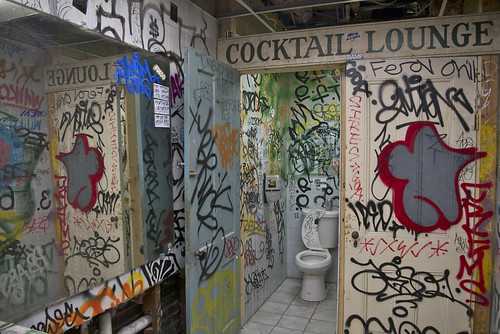
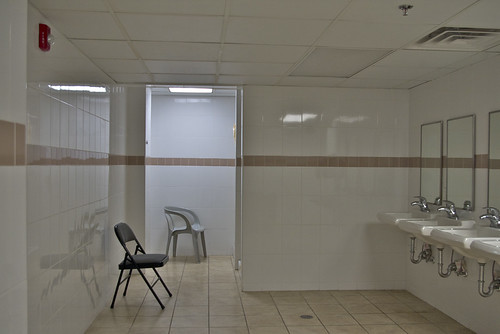
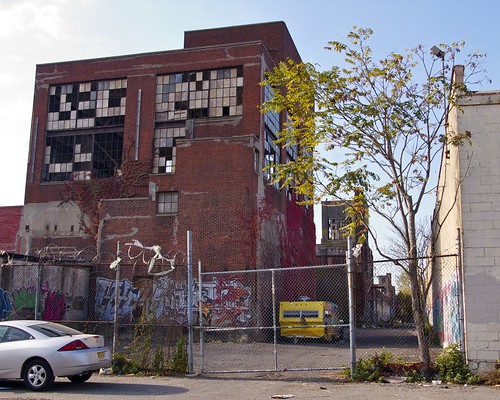
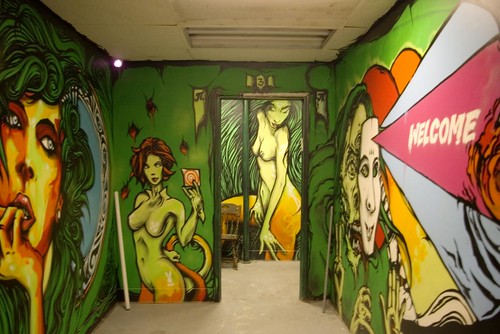

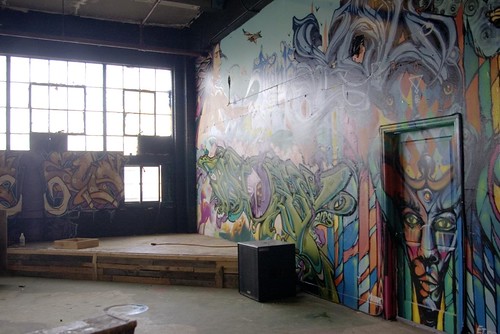


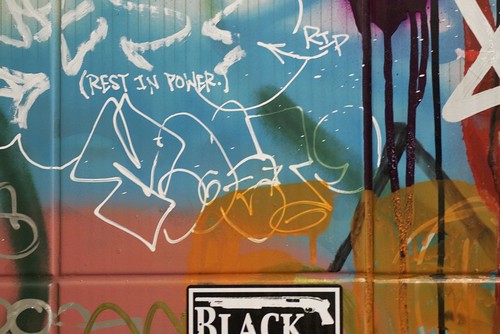
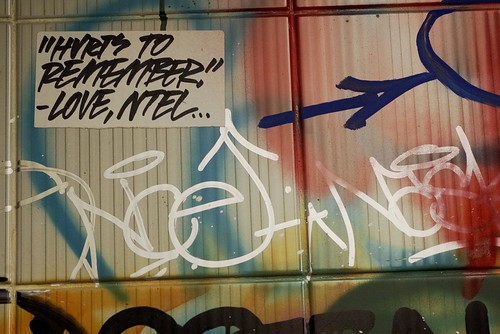

No comments:
Post a Comment